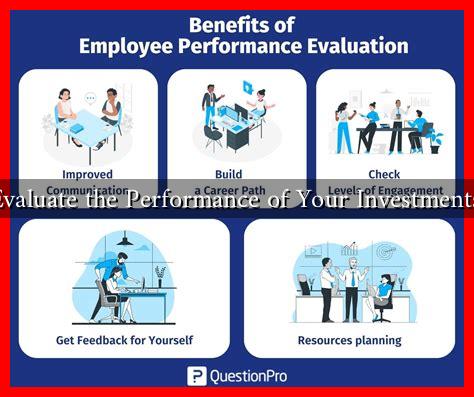-
Table of Contents
How to Evaluate the Performance of Your Investments in 2024
As we step into 2024, investors are faced with a rapidly changing financial landscape. Economic shifts, technological advancements, and geopolitical tensions can all impact investment performance. Evaluating your investments effectively is crucial for making informed decisions that align with your financial goals. This article will guide you through the essential steps to assess your investment performance in 2024.
Understanding Investment Performance Metrics
Before diving into the evaluation process, it’s important to understand the key metrics that can help you gauge the performance of your investments. Here are some fundamental metrics to consider:
- Return on Investment (ROI): This measures the gain or loss generated relative to the amount invested. It is calculated as:
- ROI = (Current Value of Investment – Cost of Investment) / Cost of Investment
- Annualized Return: This metric provides a yearly average return over a specified period, allowing for better comparison across different investments.
- Benchmark Comparison: Comparing your investment performance against a relevant benchmark (like the S&P 500) can provide context for your returns.
- Volatility: Understanding the fluctuations in your investment’s value can help assess risk. Standard deviation is a common measure of volatility.
Setting Clear Investment Goals
To evaluate your investments effectively, you must first establish clear investment goals. These goals will serve as a benchmark for measuring performance. Consider the following:
- Time Horizon: Are you investing for short-term gains or long-term growth?
- Risk Tolerance: How much risk are you willing to take? This will influence your investment choices.
- Financial Objectives: Are you saving for retirement, a home, or education? Your goals will dictate your investment strategy.
Analyzing Your Investment Portfolio
Once you have established your goals, it’s time to analyze your investment portfolio. Here are some steps to follow:
- Review Asset Allocation: Ensure your portfolio is diversified across different asset classes (stocks, bonds, real estate, etc.) to mitigate risk.
- Performance Review: Assess the performance of each investment against your established benchmarks and goals.
- Rebalance as Necessary: If certain investments have outperformed or underperformed, consider rebalancing your portfolio to align with your risk tolerance and goals.
Utilizing Technology and Tools
In 2024, technology plays a significant role in investment evaluation. Various tools and platforms can help streamline the process:
- Investment Tracking Apps: Applications like Personal Capital or Mint can help you track your investments and analyze performance.
- Robo-Advisors: These platforms can provide automated portfolio management and performance analysis based on your goals.
- Financial News and Analysis: Websites like Yahoo Finance and Bloomberg offer valuable insights and data to help you make informed decisions.
Case Study: Evaluating a Stock Investment
Let’s consider a hypothetical case study of an investor who purchased shares of Company X in 2022. The investor’s initial investment was $10,000, and by the end of 2023, the value of the investment had grown to $15,000. Here’s how the investor would evaluate this performance:
- Calculate ROI: ROI = ($15,000 – $10,000) / $10,000 = 50%
- Annualized Return: If the investment was held for two years, the annualized return would be approximately 22.5%.
- Benchmark Comparison: If the S&P 500 returned 30% over the same period, the investor would need to assess whether the additional risk taken was justified.
Conclusion
Evaluating the performance of your investments in 2024 requires a comprehensive approach that includes understanding key metrics, setting clear goals, analyzing your portfolio, and utilizing technology. By following these steps, you can make informed decisions that align with your financial objectives. Remember, investment evaluation is not a one-time task but an ongoing process that adapts to changing market conditions and personal circumstances. For more insights on investment strategies, consider visiting Investopedia.


